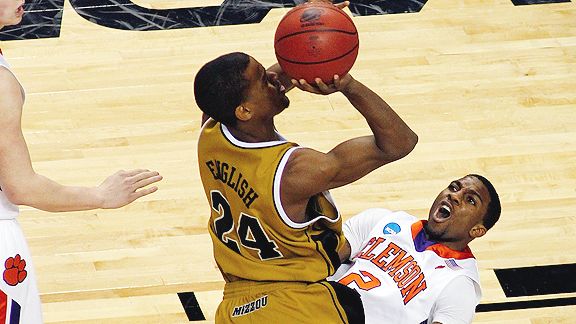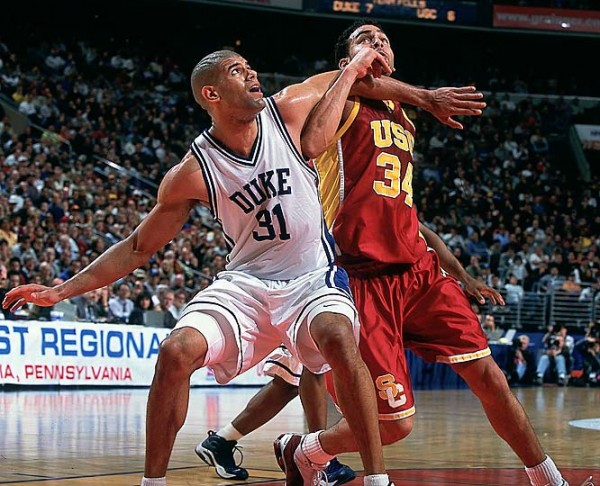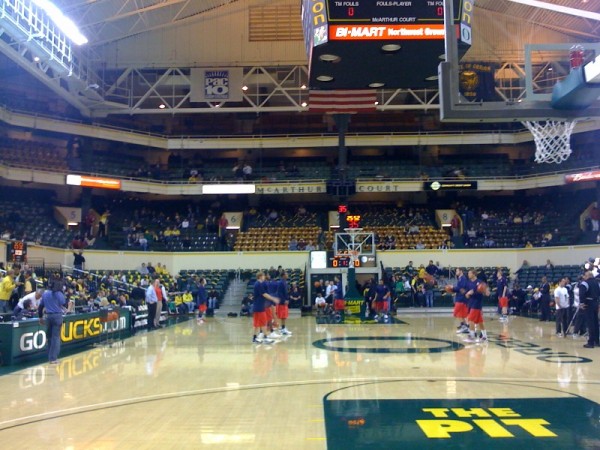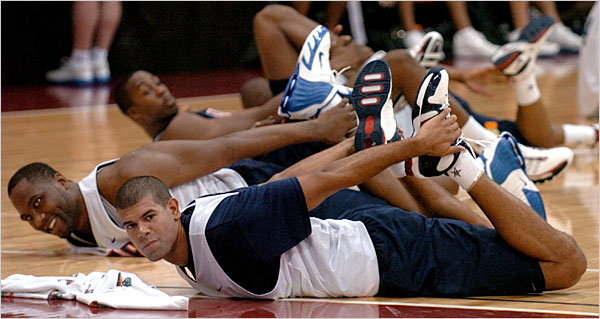As you all know, the 2008-09 season will feature a three-point line that is one foot longer than it has been for the last twenty years, moving from the standard top-of-the-key 19 feet, 9 inches that every fifth grader can hit, to the comically tweenerish 20 feet, 9 inches, which is sure to cause mass hysteria and confusion among players, coaches and referees on courts with both the men’s and women’s lines (the women are staying at 19’9″). In other words, most of the courts in D1 basketball.

So if someone such as us wanted to take a stab at analyzing what teams this rule change might most impact, how should we approach it? Here’s the set of assumptions that inform our admittedly unscientific hypothesis – feel free to call us on it in the comments if you like.
Hypothesis: Teams that have a large differential in their home/away three-point shooting percentages are likely to have fewer “pure” shooters and therefore will be most negatively impacted by the one-foot longer three-point line next season.
Assumptions:
-
We’re assuming that all team three-point percentages should decrease with the longer distance.
-
Teams with “pure” shooters should have high relative three-point percentages no matter where they shoot the ball – home or away (think back to Hickory High in Hoosiers – the rim is still ten feet no matter what gym you’re in).
-
There will be a natural dropoff in most team three-point percentages on the road because of adverse conditions, but good shooting teams will remain good shooting teams. Teams with questionable shooters will show a marked decrease between their home and road three-point percentages.
-
We admit, given turnover of players from season to season, that the predictive value of analyzing 07-08 data on the 08-09 season is tenuous at best.
Anyway, here goes… our first chart shows the best three-point shooting teams last year (>38% 3FG) that had large differentials (>6%) between its home and away games. If our theory holds, these teams could be most vulnerable to the longer three-point line in 2008-09. Wow, Temple!

The teams in our next chart were also good three-point shooting teams, but they didn’t have nearly as much of a differential (< 4%) between their home and away games. Again, if our theory holds, we’d expect that these teams won’t be as negatively impacted by the longer line this year – these guys can shoot it consistently under any condition.

Our final chart is just thrown in are, um, the exceptions that prove the rule? These teams had significant differences between home and away three-point percentages, alright, it’s only that they shot the ball astronomically better on the road than at home. We have no idea what conclusions to draw from this, so we just called them anomalies (which they are, representing a handful of teams).

Frankly, we realize that our theory has some holes in it, but maybe we’re just not seeing the total picture here. That’s what you guys are for. Thoughts?
Update: KJ at spartansweblog.com referred us to KenPom’s data set on shot selection and the accompanying percentages at each distance – we only wish we had access to that data. If the graph is correct, it tells us that an average team may not see much difference in the 3FG% with the new line. However, it doesn’t tell us much about how good-shooting teams might react. Nevertheless, good find and more fodder for discussion.


















































